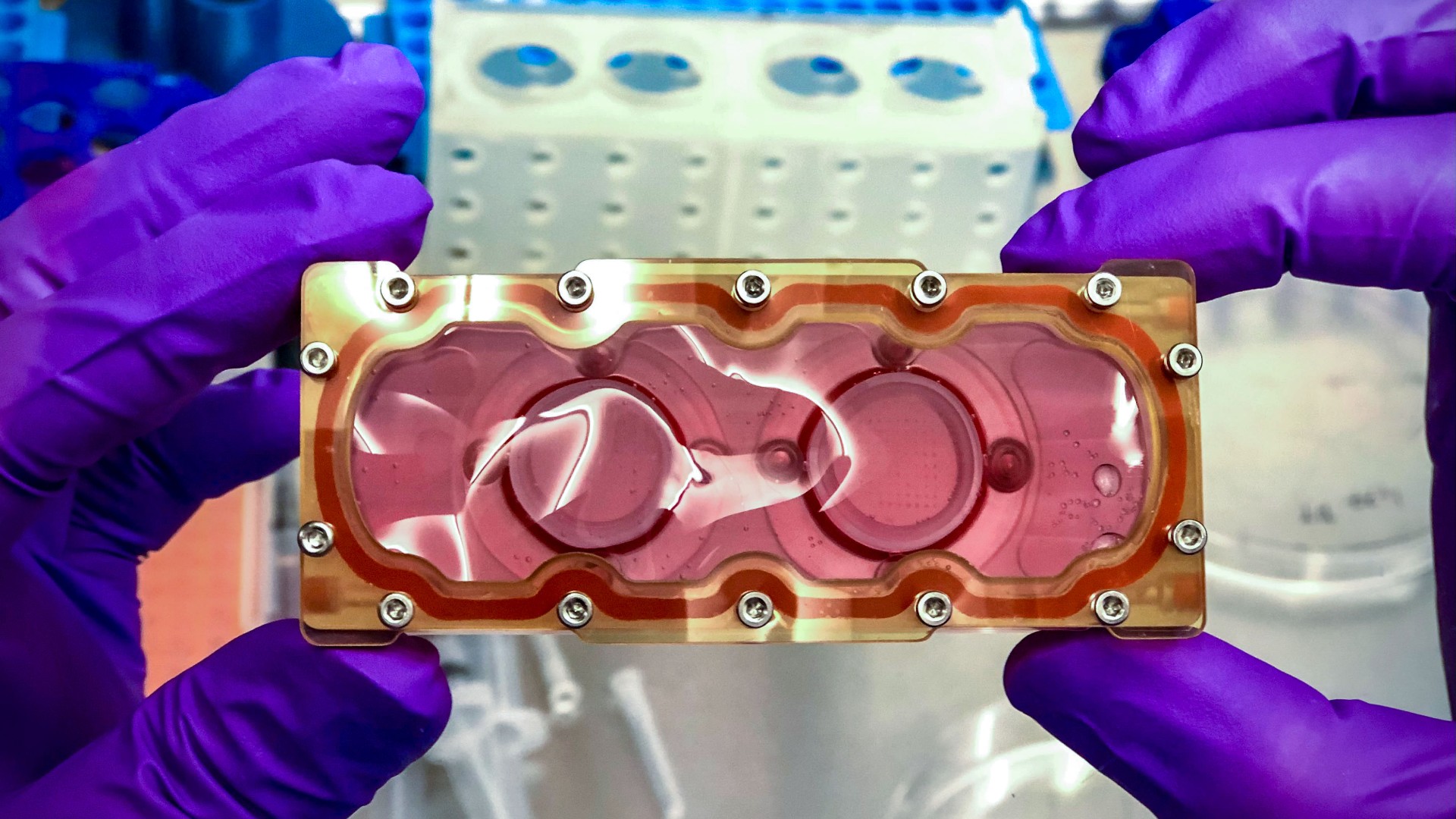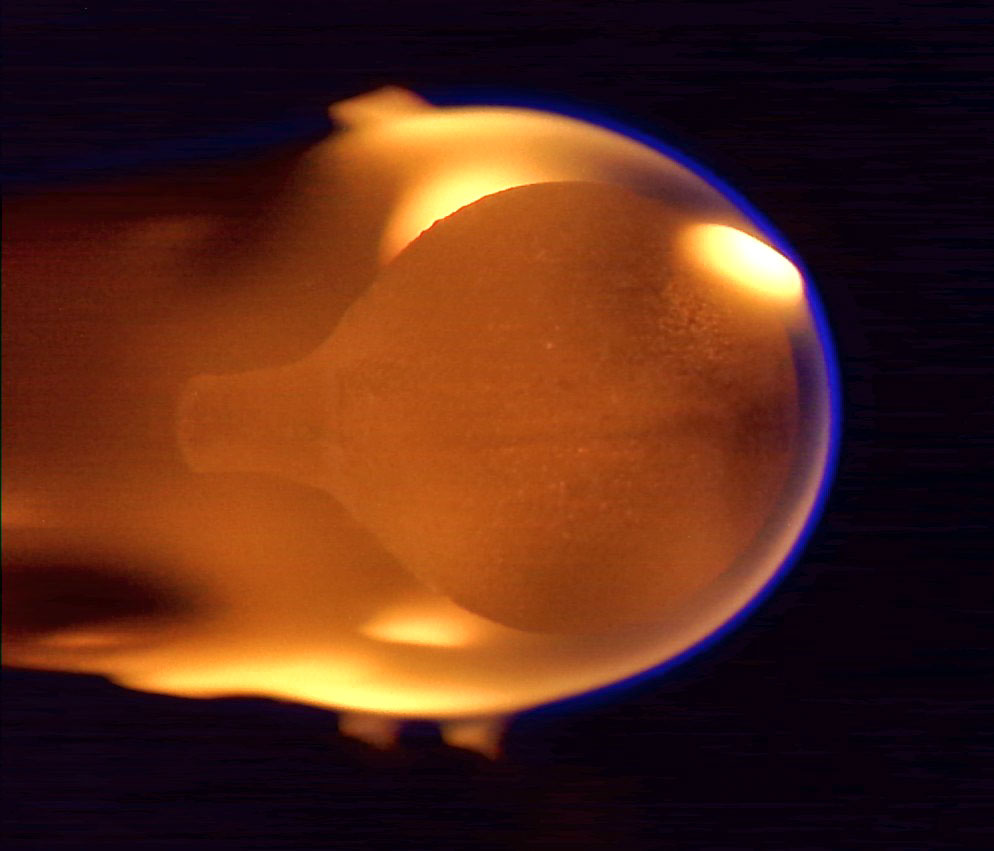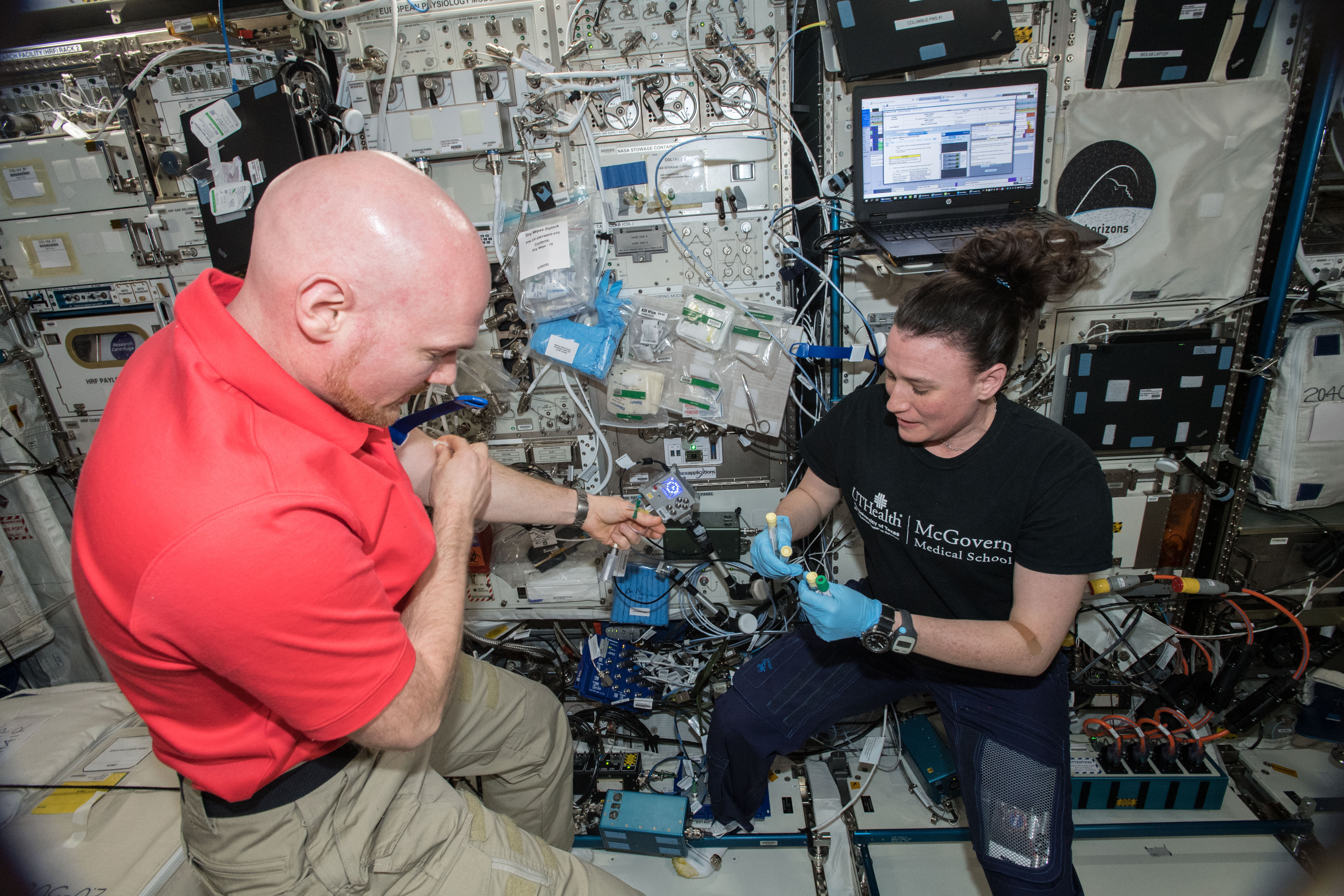SpaceX Crew-6 astronauts will answer 'burning questions' with space station science
The Crew-6 team will head out to conduct cutting-edge science during a 6-month mission as soon as Feb. 27.

The International Space Station continues to be the home of cutting edge science.
The upcoming NASA/SpaceX Crew-6 mission is set to launch to the International Space Station (ISS) as soon as Feb. 27. Following launch from Kennedy Space Center in Florida, the team will conduct cutting-edge science aboard the orbiting laboratory during a 6-month mission.
The investigations that the crew including NASA astronauts Stephen Bowen and Warren "Woody" Hoburg, United Arab Emirates astronaut Sultan Alneyadi and Roscosmos cosmonaut Andrey Fedyaev include monitoring how spaceflight affects cellular immune functions in humans, and spacewalking to collect samples outside the ISS to see if the station releases microorganisms. Another one of the experiments, NASA wrote in a Feb. 22 statement, will answer 'burning questions' about combustion in microgravity.
Related: Meet the SpaceX Crew-6 astronauts launching to the International Space Station on Feb. 26
Read more: SpaceX astronaut missions for NASA: Crew-6 updates
One investigation the team will be engaged in is the continuation of the combustion research using the Solid Fuel Ignition and Extinction (SoFIE) hardware insert for the station's Combustion Integrated Rack (CIR).
Thus far SoFIE research has looked at how the temperature of fuel affects its flammability, and this will now be extended by investigating how thermally-assisted burning in the microgravity of the ISS. To do this the team will change experiment parameters like airflow, oxygen concentration, pressure, and radiation levels.
SoFIE findings could help assess the flammability of materials to be used in future space missions, vital for planning these projects and designing equipment. The results could also help astronauts detect and suppress fires in space as well as present applications in combustion here on Earth too.
Get the Space.com Newsletter
Breaking space news, the latest updates on rocket launches, skywatching events and more!

Another of the team's planned science missions will assess the effects that human space missions can have on space environments. The astronauts will venture outside of the ISS on spacewalks to collect samples from near life support system vents.
The aim of this is to see if the ISS is releasing microorganisms into space and if it is, how many, and how far they could travel. The results of this particular experiment could alter the design of future space missions and equipment like spacesuits so that potential contamination from Earth can be limited.
The test may also help better understand extremophiles, organisms that exist here on Earth in the most inhospitable and extreme conditions where life had previously been considered impossible.
Human health in space and on Earth
As well as looking at the effects human space missions have on space, the Crew-6 team will also investigate the effects of space environments on ourselves, including the effect of spaceflight on the human immune system and our organs.
The former is the concern of the European Space Agency (ESA) Immunity Assay, a test that uses a functional immune test to monitor how spaceflight impacts cellular immune functions. Previously this test would be conducted before and then after space flight here on Earth. This is the first time the experiment will be run while in space, something that has been made possible by a newly designed assay tube.
Read more: Can we live long and prosper in space? The astronaut health dilemma

Similar tests have been conducted in microgravity simulated here on Earth and have demonstrated that the body's ability to defend against infection changes in response to stresses induced by near weightlessness.
Testing "inflight" with astronaut blood and saliva samples should paint a clearer picture of immune changes that happen while in space and could help scientists plan measures to counteract these changes.
Also investigating the effects of spaceflight on human health is a series of investigations under the "Tissue Chips in Space" banner. The result of a collaboration between the National Center for Advancing Translational Sciences (NCATS) at the National Institutes for Health (NIH) and the ISS National Lab, the project tests small devices that mimic the function of human organs on the space station.
The microgravity studies let scientists model changes in organs that may only occur over time spans of months or years on Earth. During the second phase of these experiments, the astronauts will look at two separate tests.
Cardinal Heart 2.0 will test if clinically approved drugs could prevent changes in heart cell function and gene expression that occur during spaceflight. Findings from this experiment could guide drug development on Earth and could lead to interventions that ate more effective in treating patients with diseases such as heart failure.
Meanwhile, the Engineered Heart Tissues-2 test will examine therapies designed to prevent space-induced changes in heart tissue, changes that could potentially lead to cardiac disease. This could assist in the development of interventions to help protect the cardiac health of future space explorers in addition to helping patients at risk of developing heart disease here on Earth.
The experiments as a whole provide strong examples of how scientific experiments conducted in space can help tackle every day and more "down to Earth" but no less pressing problems.
Follow us @Spacedotcom, or on Facebook and Instagram.
Join our Space Forums to keep talking space on the latest missions, night sky and more! And if you have a news tip, correction or comment, let us know at: community@space.com.

Robert Lea is a science journalist in the U.K. whose articles have been published in Physics World, New Scientist, Astronomy Magazine, All About Space, Newsweek and ZME Science. He also writes about science communication for Elsevier and the European Journal of Physics. Rob holds a bachelor of science degree in physics and astronomy from the U.K.’s Open University. Follow him on Twitter @sciencef1rst.









